-
Introduction
DMLS is a metal 3D printing method to achieve complex designs that machining or casting are unable to attain. Mechanical properties of aerospace standard materials as well as design freedoms are offered when using Direct Metal Laser Sintering. It’s able to breakthrough challenges and deliver outstanding designs that would not be possible without Metal 3D printing. DMLS begins using a 3D CAD file that uses a high-powered and precise laser to melt powdered metal layer upon layer. These layers can build one or more designs. A build chamber infused with argon gas is used for printed parts. A YB-fibre laser selectively melts the design’s cross section through a computer-determined scan path. The laser, powder, and additive process come together to create a forceful design freedom triad.
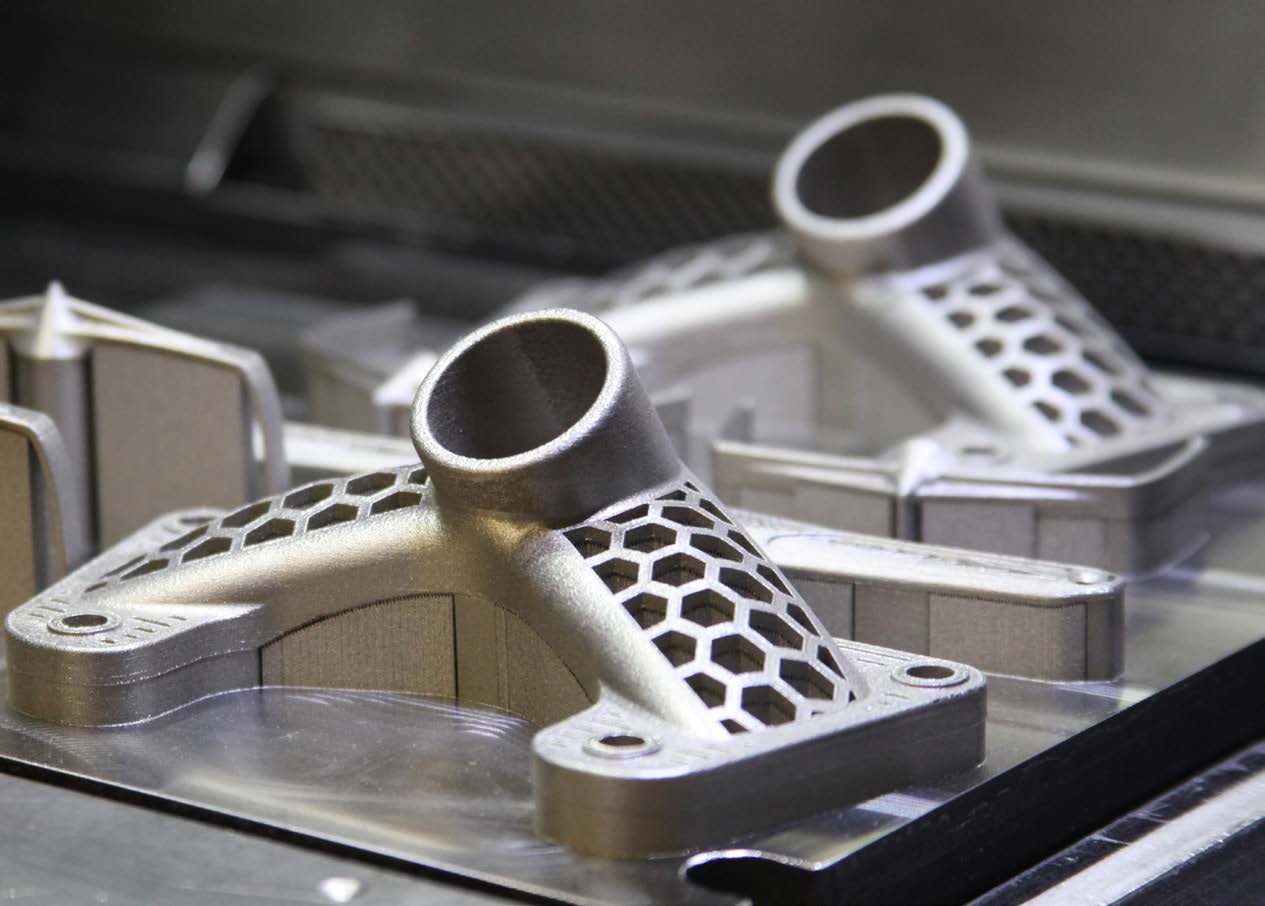
-
Materials
Materials – The following are metals and alloys that are useable in 3D metal printing:
Titanium – pure
Titanium alloys
Nickel-based alloys
Cobalt chrome alloys
Copper-based alloys
Steel
Stainless SteelThese materials are further explained what they are and how they are used in DLMS.
Materials Specification Application Stainless Steel (15-5 PH) Precipitation-hardened (PH) stainless steel is used in many industries due to its endless benefits such as strength, fabricability, ease of heat treatment, corrosion resistance and toughness. A number of different industries use this product for production parts Stainless Steel (17-4PH) 17-4 PH stainless steel has ferrite, where 15-5 steel is ferrite-free. But like the 15-5, 17-4 has great strength, fabricability, ease of heat treatment, and is corrosion resistant! A number of different industries use this product for production parts Stainless Steel (316L) High strength and wear resistance while using austenitic chromium-nickel alloy. Benefits include good elevated temperature strength, formability and weldability. Like 17-4 and 15-5 stainless steel, it has excellent corrosion resistance. Used in aerospace and medical industry for production parts Aluminum Known for its strength and hardness and is often used for mechanical and thermal properties when a specific low weight is needed. Aerospace and automotive production parts Maraging Steel Martensitic hardening steel with durability and toughness. Also has tensile strength and low warping properties. Another great feature is that its easily machined, hardened and welded.It can be used with different applications because of its malleability. Series production and mechanical parts use injection molding tools Titanium (Ti6A14V/Grade 23) Outstanding mechanical properties, with corrosion resistance and low specific weight. Strength-to-weight ratio is exceptional, as well as the fabricability and biocompatibility. Medical implants rely on this Titanium because of its improved ductility and fatigue strength Used for production parts in medical (implants) Titanium (Ti6A14V/Grade 5) Like the above titanium, this also has outstanding mechanical properties, with corrosion resistance and low specific weight. Most commonly used for strength-to-weight ratio, fabricability, and its power to heat treat Aerospace and automotive production parts, specifically motorsports Cobalt Chrome This superalloy has excellent wear and is corrosion resistant. Conveys good mechanical properties at elevated temperatures. Benefits such as wear and corrosion resistance and biocompatibility make it Aerospace and automotive production parts, specifically motorsports Nickel Alloy (Inconel™ 718/ UNS N07718) Another superalloy with great yield, tensile and creep-rupture strength at high temperatures. Also used for high strength applications in extreme environments and has good weldability compared to the other nickel-based superalloys Used in the aerospace industry for production parts, specifically high-temperature turbine components Nickel Alloy (Inconel™ 625/ UNS N06625) This superalloy has amazing strength, and toughness when used at high temperatures. It’s commonly used for high strength applications in harsh environments. Shows supplementary resistance to pitting, crevice corrosion and stress corrosion cracking in chloride environments. Used in the aerospace industry for production parts, specifically high-temperature Nickel Alloy (UNS N06002/Hastelloy X) Our last superalloy that has out of this world combination of high temperature strength, fabricability, and oxidation resistance.Also useful in extreme environments. Holds resistance to stress-corrosion cracking in petrochemical environments. Also forms and welds very well. Production parts used in severe heated conditions. Also high risk of oxidation (combustion chambers, supports and burners in industrial furnaces) 
-
Applications
Although the most popular industry that uses DMLS is the aerospace industry, other industries use the same process for different applications.
Aerospace Injectors
Combustor liners
Rocket engine manifolds
Research efforts
Functional prototypesMedical Dental devices
Surgical tools
Orthopedic implant devices/prototypes
Educational models
Training toolsEnergy Rotors
Stators
Mud Motors
Turbine prototyping and research
Bridge applicationsIndustrial Prototype tooling
Manufacturing fixtures
Low volume production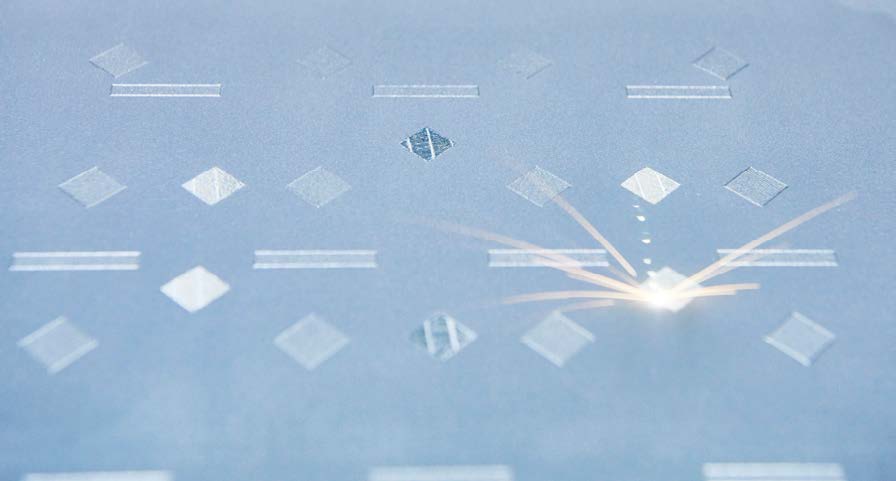
-
Technical Specifications
Feature Description Wall thickness Minimum thickness of 0.4 mm Pin Diameter Minimum is 1 mm
If smaller diameter is needed, reduce contour sharpnessHole Size For accurate prints with no support use hole diameters between 0.5 mm and 6 mm
Support free building with hole diameters between 6 mm and 10 mm is orientation dependent
Support structure is required when horizontal holes with diameter of 10 mm is usedEscape holes Holes are needed on hollowed metal parts so unmelted powder gets properly removed
Bore hole diameter between 2 and 5 mm is suggestedSupport/Overhangs Support is necessary in all situations Unsupported Walls 0.5 mm is the maximum length a cantilever-style overhanging surface can be Aspect Ratio Maximum ratio is 8:1 Between the vertical print height and part section. This is yo stabilize the printed part on the build plate Tolerances Part tolerance is ± 1mm -layer thickness in print direction
0.127 mm is attainable in the XY planeMinimum Features 0.6 mm required Embossed/Engraved Details 0.1 mm wide/high -
Limitations
As the cost is often higher with both machines and materials, using this technique is not often fit for producing high volume orders. Design also is a limitation when using DMLS. This is because not all applications designed when using traditional manufacturing can be converted to a additive manufacturing solution. More restrictions when using DMLS is product size. Most machines, even large machines, have a small build size volume. The average build volume size is 250 mm x 250 mm x 300 mm. Furthermore, machines are very complex to use, coming in industrial sizes and strict operating, material handling, post processing and maintenance procedures.
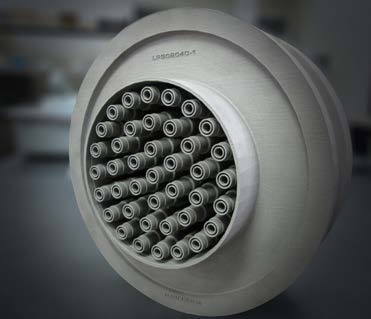
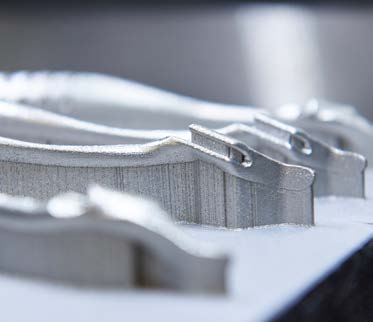
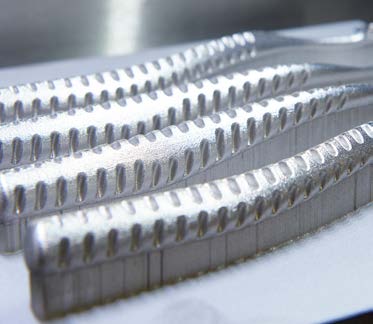
-
Post-Processing
The most frequently used post processing methods are the following;
- Surface treatment
- Support removal
- Heat treatment
- Machining
Skip to content